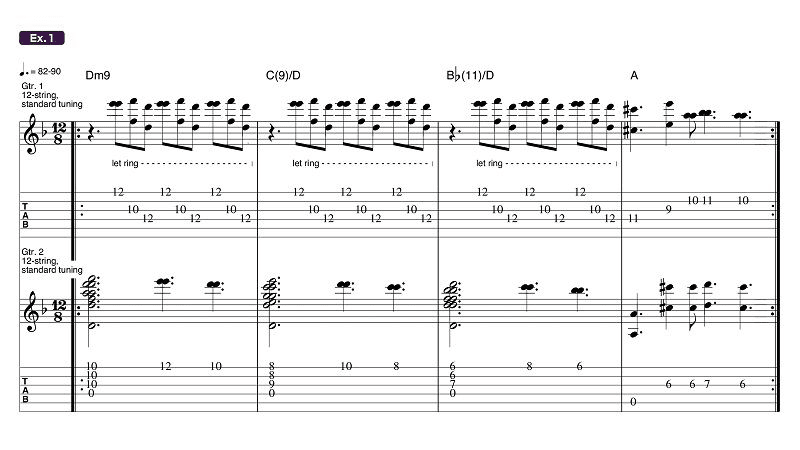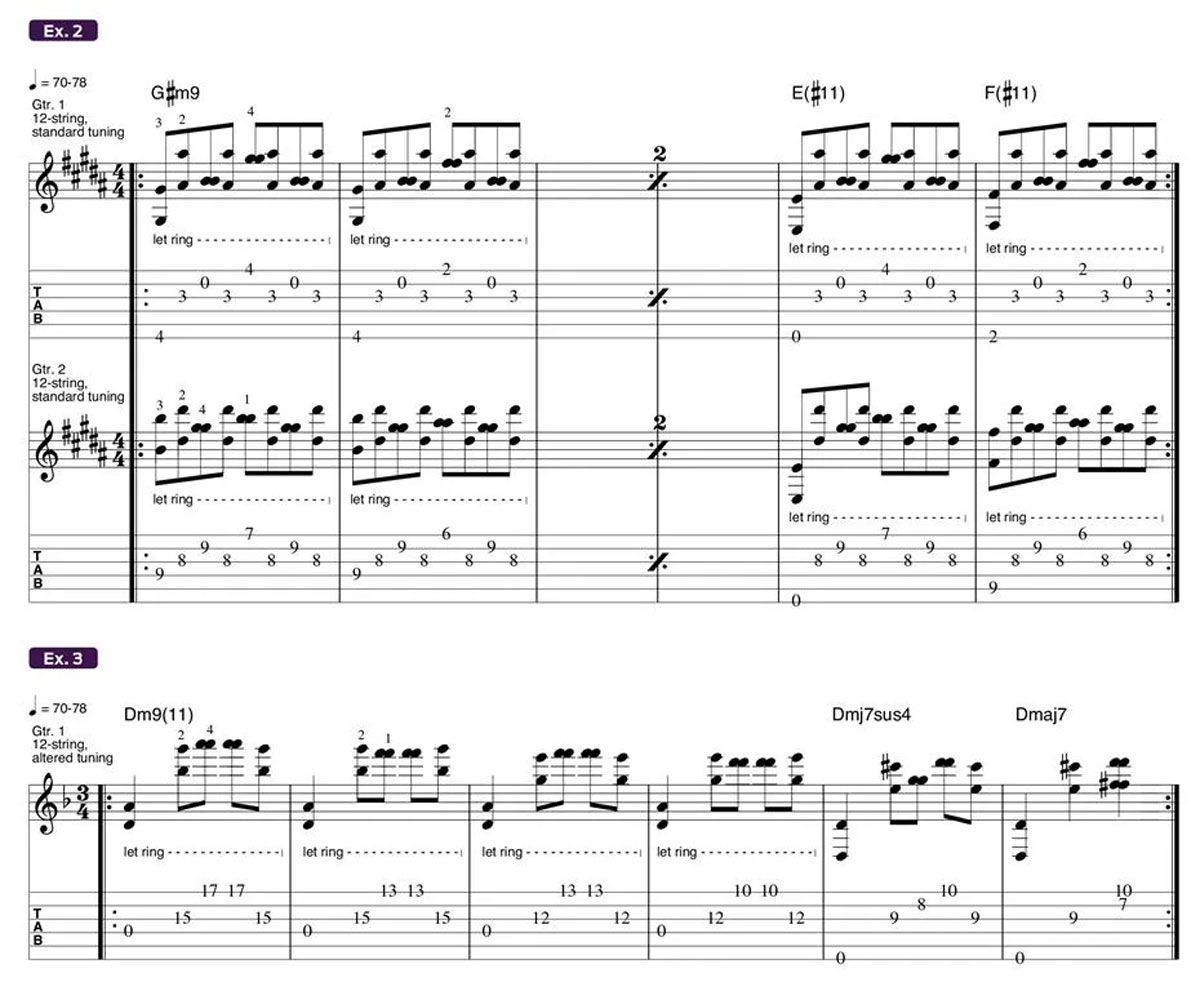Decoding the 12-String Tapestry of Early Genesis
The early music of Genesis should provide you with a largely untapped wellspring of inspiration.

Mention Genesis to most guitarists and they’ll likely effuse over the band’s one-time lead ax-grinder Steve Hackett who, among other sonic innovations, helped popularize the use of fretboard tapping. Conversely, speak of rock’s finest 12-string players and the names McGuinn, Page and Harrison are apt to dominate the conversation. Truth be told however, despite Hackett’s brilliance as a lead player, the blueprint for Genesis’ signature sound of the early-to-mid ’70s was created by the ingeniously layered 12-strings of guitarist/bassist Mike Rutherford, keyboardist/guitarist Tony Banks, and, Hackett’s predecessor, guitarist Anthony Phillips.
Epic multi-section tracks like “Supper’s Ready,” “The Musical Box” and “Stagnation” generally started with rolling arpeggio inversions on multiple acoustics before Banks switched to keys and Phillips or Hackett to electric, leaving Rutherford to hold down the fort on rhythm guitar and bass pedals and/or wield his custom Rickenbacker bass/12-string doubleneck. So unique and seamlessly blended was this soundscape that it’s often hard to pick out the individual parts, much less identify what instrument(s) are responsible for them. (For years I was under the impression that the beginning of “Supper’s Ready” was played on Pianet!)

Let’s begin with an excerpt transcribed for two 12-strings and based on “White Mountain,” a track from the 1970 album Trespass. Here in Ex. 1, Guitar 1 plays a rolling three-note figure based on a Dm(9), while Guitar 2 sounds high-voiced block chord inversions of a Im-bVII-bVI chord progression. In bar 4, both parts effortlessly dovetail on a melodic line suggesting an A (V) chord.
Recalling the lushly orchestrated “Entangled” from 1976’s A Trick of the Tail album, Ex. 2 finds Guitars 1 and 2 arpeggiating different inversions of a G#m(11) chord. Although the high-string melodic line is harmonized in diatonic thirds, Genesis was more likely to base chord inversions on sound and feel than on theoretical dictum. As a result, 2nds, 4ths, 9ths, and 11ths ring against each other, creating a hypnotic tapestry of sound. For the E and F# chord changes in bars 5 and 6, hold the initial chord shapes down but switch the bass notes. (Hint: use your fretting-hand thumb to grab the F# bass note that Guitar 1 plays in bar 5.)

Based on the intro to 1973’s “The Cinema Show,” Ex. 3 sounds like two guitars but is playable on just one thanks to Rutherford’s clever 12-sting tuning. The sixth and fifth string pairs - or courses - are kept in octaves, but each is lowered a whole-step. For the fourth course, what would normally be the high-octave string is tuned down a fourth to A, and on the third course, what would normally be the high-octave string is dropped a minor third to E. The top two string pairs are left as is, making the entire 12-string tuning a dD, gG, D, eG, BB, EE (low to high). The lick itself descends through some smooth voice-leading in D minor, before resolving on a Baroque-styled Dsus4 to D cadence.
Layered 12-strings are among the most compelling yet under-explored guitar sounds. The early music of Genesis should provide you with a largely untapped wellspring of inspiration.
All the latest guitar news, interviews, lessons, reviews, deals and more, direct to your inbox!
